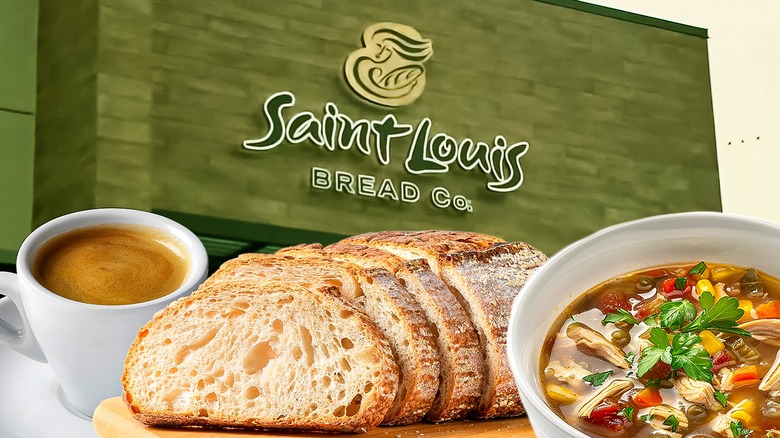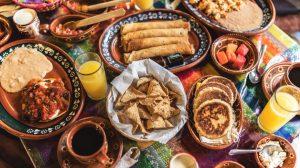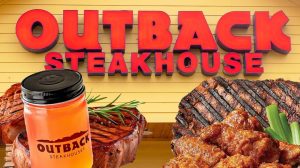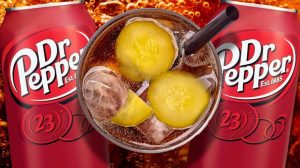The combination bakery and cafe known far and wide as Panera Bread has undergone a weighty transformation in recent years. As part of its biggest menu change in history — which rolled out in April 2024 — the chain welcomed nine brand new items while simultaneously axing other specific selections and entire categories like flatbreads and Mediterranean bowls.
This wave of menu shifts has been labeled “the new era at Panera.” But have you ever wondered what it was like to eat at the chain during its very first era? Spoiler alert: It hasn’t always been stocked with such a diverse list of fares, and a welcoming ambiance wasn’t always a top priority. The bakery’s first location, founded by Ken Rosenthal, officially opened in Kirkwood, Missouri in 1987 under the name St. Louis Bread Company. The company was born during a decade most well-known for the rise of consumerism, blockbuster movies, and, most importantly, the introduction of personal computers.
Back then, the shop’s main purpose was to put “a loaf of bread in every arm” and supply customers with only the freshest baked goods. Although this original flagship store is no longer in business (it relocated across the street to acquire more space), the brand itself has done more than survive — it has thrived. Let’s take a journey back in time to see how the bread company, which now stands at over 2,100 locations strong, first rose to greatness.
The restaurant wasn’t called Panera
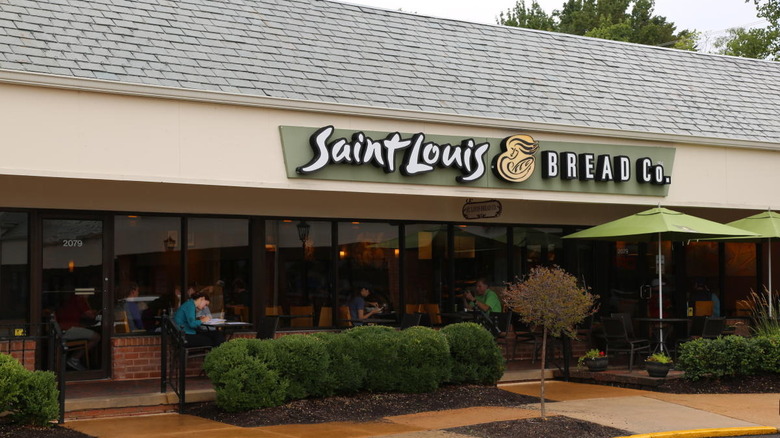
Discover St. Charles
That’s right. Your favorite chain bakery hasn’t always gone by the familiar name Panera Bread. When the business first sprung to life in 1987, it was dubbed the St. Louis Bread Company — a longer and more to-the-point designation. For around six years, the humble bakery operated under this title as it churned out loaf after loaf and eventually grew to 19 locations around the St. Louis area. It wasn’t until 1993 — when the company was acquired by the bakery company Au Bon Pain — that it underwent its monumental rebranding.
According to an interview with The Washington Post, Au Bon Pain co-founder Ron Shaich explained that the new label was made up because the company “wanted a name that was an empty vessel [it] could put personality into”. That’s how it landed on the word Panera, which happens to mean “bread basket” in Latin.
Panera Bread is the name that has turned the joint bakery-cafe into a national success. However, the original name of Panera Bread lives on. There are restaurants in and around the company’s hometown that still proudly carry the St. Louis Bread Company moniker — though most true St. Louis natives commonly shorten it to just Bread Co. Here, at these throwback eateries, you will find the same logo, branding, and even menu as any other Panera location.
Bread has always been baked using the same starter
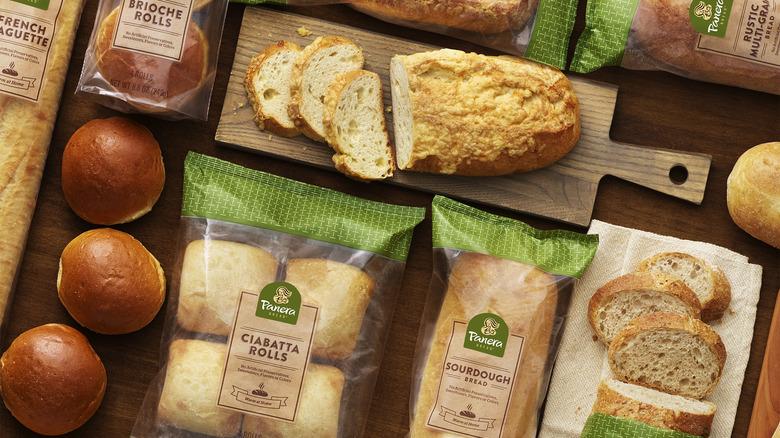
Panera Bread
One thing that has stood the test of time is the bread itself. Panera still uses the same sourdough starter from San Francisco that jumpstarted the bakery all those years ago. And, although it may not be considered authentic sourdough by those who know the bread business — made on an expedited timeline with synthetic additives — most of us can agree that it’s still pretty delicious.
The chain also touts that its breads and other treats have always been baked fresh daily. An original St. Louis Bread Company menu even reveals that back then, it measured freshness “by the hour, not by the day”. The bill of fare also shows that in addition to classic sourdough, patrons also had a choice of 14 other bread types from olive and Asiago cheese to swirl rye and Mexican fiesta.
Nowadays, similar to the story of the starter, there’s also a bit of a caveat to the daily baking schtick. Ex-employees via Reddit and an interview with Refinery 29 divulge that food at Panera isn’t as fresh as you think. The dough is baked in-house, but it comes pre-prepared from a regional facility. This process presumably ensures consistency between locations since the company now operates at such a large scale. The bread options are a bit lighter today as well, including French baguettes, country rustic sourdough, tomato basil, brioche rolls, black pepper focaccia, artisan ciabatta, and classic white miche bread.
Bagels and breakfast weren’t originally on the table
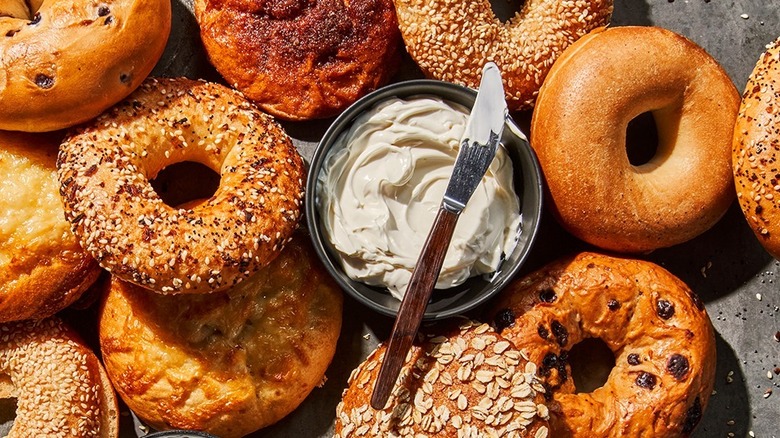
Panera Bread/Facebook
Bagels are a cornerstone of the current Panera menu. It’s hard to imagine living in a world without the iconically cloying cinnamon crunch or savory Asiago cheese bagels — not to mention classics like plain and everything. However, these circular baked goods weren’t always on the bakery’s fresh food roster.
Shaich told the Washington Post that before Au Bon Pain got involved, the St. Louis Bread Company’s list of eats was quite brief and simple. He recounts that the product line was basically just lunch, and more specifically, salads paired with the bakery’s signature bread. That means no warm and chewy bagels, or any breakfast items at all for that matter. This is a starkly different reality from today’s Panera where you’ll find egg sandwiches, oatmeal, souffles, and pastries galore when you stop in for the most important meal of the day.
The original St. Louis Bread Company menu (from a little later on) did include fresh bagels, but they were flagged as a new addition to the lineup. Even so, the options were already robust featuring seven different bagel varieties. Plain, mixed topping, blueberry, multi-grain, cinnamon raisin, poppy seed, and sesame seed were all available according to the menu. And, the spreadable cream cheese options were anything but boring including plain, lite, garden vegetable, fat-free garlic, raspberry, walnut honey (a flavor combo that is still available today), and lox spread.
Some soups were only available on a rotating schedule
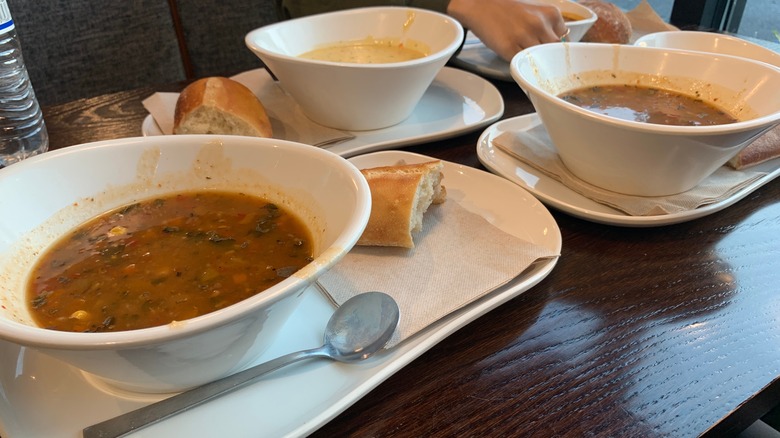
Annie0303/Shutterstock
People go crazy for Panera Bread’s signature soups — especially longstanding legends like the homestyle chicken noodle, bistro French onion, and broccoli cheddar. Obsession over the latter is so real that customers even wear it proudly in the form of soupy (and certainly cheesy) swimwear.
Part of the reason these original recipes are so crave-able is because the company has had years to perfect them. Soup has been around for quite a while at the chain, although they weren’t always as accessible as they are now. The dated St. Louis Bread Company menu lists French onion soup as the only variety that used to be available every day of the week. The rest were on a rotating schedule so customers had to be more methodical about when they stopped in. Broccoli and cheese, for example, was a Monday through Thursday specialty, while chicken noodle only made an appearance Wednesday to Sunday (hopefully, this lined up with the days patrons came down with a cold). There were also a few unfamiliar offerings on the list that were axed at some point in time including Boston clam chowder, vegetarian gumbo, and potato with cream cheese.
In this day and age, every soup on Panera’s menu is served every day (after 10:30 a.m. of course). But, after the chain’s recent and more radical changes that eliminated choices like turkey chili and ten vegetable soup, only six soups remain.
You Pick Two and bread bowls were early offerings
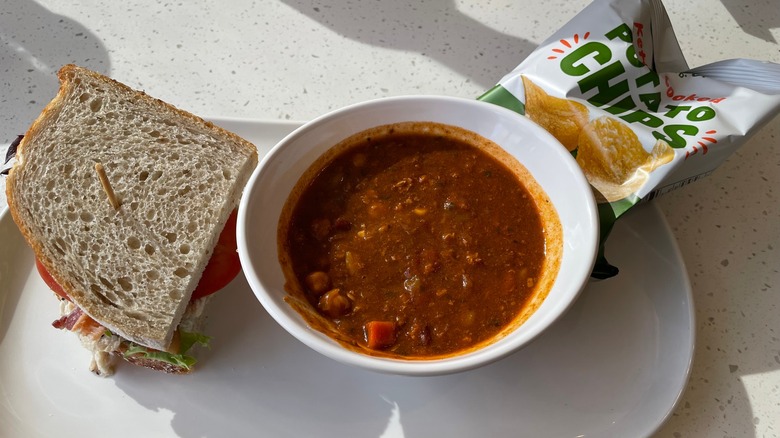
Melissa Herzog/Shutterstock
For anyone unfamiliar with the Panera brand, its famed “You Pick Two” deal is as simple as it sounds. It allows customers to select two options between a cup of soup, half salad, or half sandwich to create a more diverse meal. Plus, it comes with the dealer’s choice of a side French baguette, chips, or apple. Needless to say, it’s a popular order at the restaurant, and one it’s been upholding for years.
Back in the good old days, the pairing cost just $5, and the choices would have been a tad different. To start, customers could opt for any of the daily soup bowls. Then, salad possibilities included a Greek, Caesar, or healthy choice (a curious name — aren’t most salads meant to be a “healthy” choice?). Lastly, eight sandwiches consisted of tastes like turkey, chicken salad, Italian salami, roast beef, or a combo sandwich featuring four types of meat for an extra dollar. Patrons could also upgrade to a sourdough bread bowl for their soup for another upcharge of $1.15.
If you were wondering, this historic deal has been known to save people money — both then and now. Redditors share that it typically comes with at least a $1 cost savings per item. They also explain, though, that the best way to get the most bang for your buck today is with the chain’s Value Duets that are discounted even further.
Clean ingredients have always been a priority
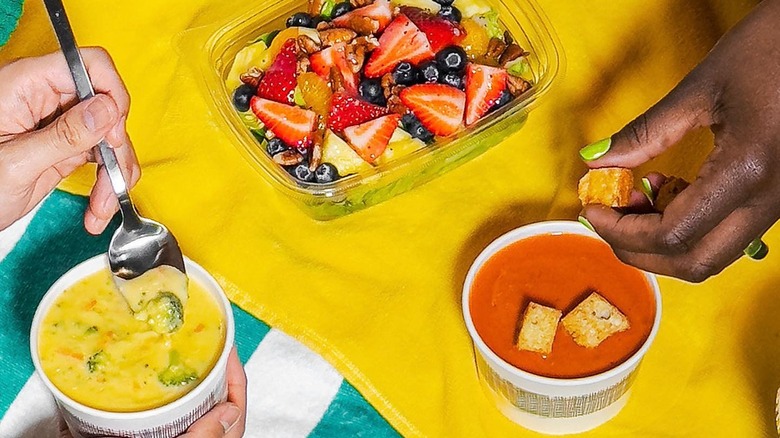
Panera Bread/Instagram
When describing the original business plan for Panera, Shaich drew comparisons to specialty coffee and craft beer. “It was for people who wanted to feel better about their food and who were willing to pay a little bit more for something that was worth a lot more,” he told the Washington Post. Ever since, the chain has stuck to this principle of specialty, fast-casual dining while offering better-for-you fare.
Like everything else at the establishment, it all starts with the bread. As mentioned, the company has used the same sourdough starter since its inception. In addition, Panera explains on its website that it employs further time-honored techniques to create the highest quality products. Produce, herbs, and other ingredients are always fresh at the chain and harvested at the peak of ripeness — something Panera ensures with its rotating seasonal menu.
The company also focuses heavily on animal welfare, only sourcing meats safely and humanely without the use of antibiotics. This goes hand in hand with its dedication to human welfare, made evident by its notorious “No No List”. The record makes note of every single artificial ingredient — such as aspartame or high fructose corn syrup — that you will never find in one of Panera’s food items or grocery products. Although this list didn’t exist in Panera’s early days, the bakery’s old menu did make sure to express its commitment to quality and called out the lack of preservatives in its fine bakery products.
Dining in wasn’t the norm
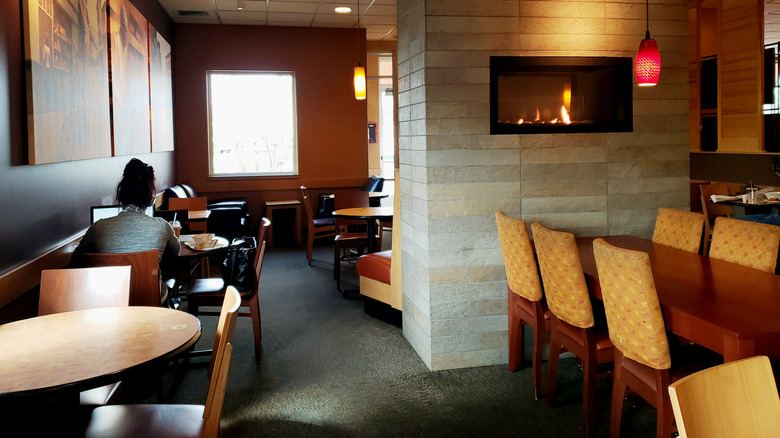
Badon Hill Studio/Shutterstock
When you walk into a Panera Bread today you are instantly transported to a place of comfort and bliss. Paintings and murals line the restaurant’s walls. Seating is made up of cushy chairs and plush booths that make guests want to sit and stay awhile as they enjoy their food with real silverware and dishware. The sounds of classical music and the smells of freshly baked bread swirl together in the air, and the electric fireplace is always on, even in the dead heat of summer. It’s this exact environment that has made the chain less of a quick-service establishment and more of a destination for dining in, doing homework, and even conducting business.
Eating at the very first St. Louis Bread Company wasn’t quite as cozy and inviting. It followed more of a standard bakery format, and Shaich told the Washington Post that it featured tile, Tiffany lamps, and bread cases everywhere. A KSDK News video interview from 1987 also helps to paint a picture of the restaurant’s original setup. In the video, all products can be seen presented in a glass display case where customers could view them and order over the counter — similar to the process at a retro-style donut shop. Tables and chairs appeared to be both limited and rigid. So, even if guests did choose to sit and eat their bakery items in-house, they likely wouldn’t have been tempted to stick around for long.
Customers had the option to order ahead
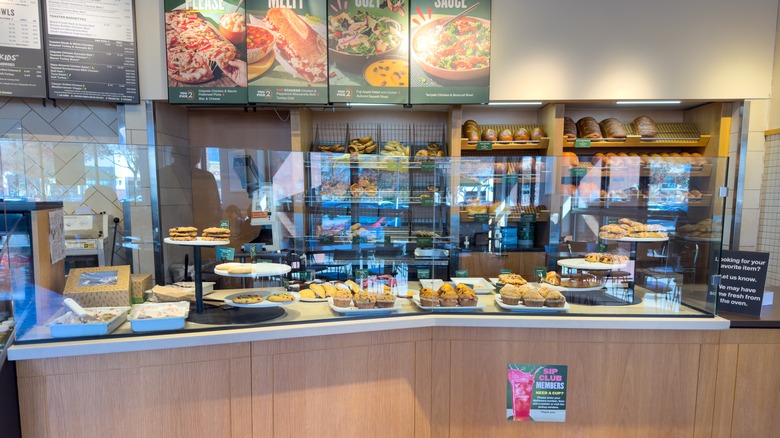
ZikG/Shutterstock
Early St. Louis Bread Company locations were ahead of their time, offering customers the option to order their bread and other food products in advance before coming to pick them up at the bakery. Of course, in those days, the only two methods were to phone in your request or to send it in the form of a fax — a funny and unfamiliar concept to us today. Can you imagine transmitting a paper fax to the hustling and bustling restaurant down the street? A modern-day employee would likely take one look at the sheet and laugh, or more likely than not, not even know what it was.
Now, in 2024, everyone is living this kind of fast-lane life. As such, there are multiple systems in place to get your food in a flash. First off, calling isn’t even necessary anymore as Panera relies on its app and website to do the heavy lifting. There are three distinct pick-up options once you make it to your neighborhood location. One, which was implemented in 2016, is the Rapid Pick-Up shelf located inside the restaurant. If you don’t want to step foot out of your car, you can also opt for curbside pick-up. Or, as of 2023, you can even swing through the drive-thru to pick up your takeout bag — talk about convenience.
Coffee took precedence over other specialty drinks
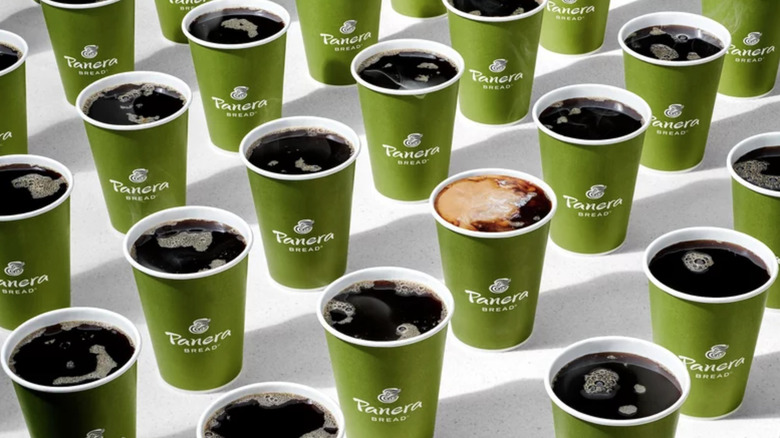
PR Newswire
Staying caffeinated has never been a problem at Panera or its predecessor, the St. Louis Bread Company. At some of the bakery’s very first locations, espresso drinks were flowing — from straight shots to more elaborate beverages. These included classics like Caffe Americanos, cappuccinos, lattes, and Caffe mochas, as well as less common creations like the Caffe Borgia featuring hints of orange and chocolate with whipped cream on top. The best part was that each drink could be served hot or iced, and either caffeinated or decaffeinated.
Luckily for java junkies, coffee is still a staple on Panera’s menu, and the espresso bar remains fully stocked. What’s more, is that the chain works hard to deliver the best cup of joe possible. Its coffee beans are sourced from Central and South America and later sorted by hand to eliminate any imperfections. They are then ground right at the cafe to ensure optimal freshness.
One category of drinks that customers enjoy now that they couldn’t a few decades ago is specialty beverages like smoothies, flavored lemonades, and teas. Sure, the bakery offered standard selections like soft drinks, milk, juice, and hot chocolate. But, it was certainly not mixing up complex frozen treats or charged lemonades — the super-caffeinated Panera drinks that were discontinued following bouts of controversy.
Considering inflation, prices haven’t changed much
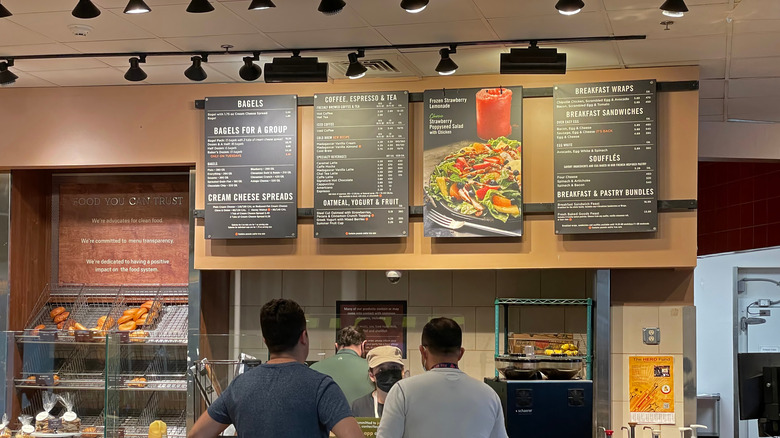
QualityHD/Shutterstock
It’s easy to browse through one of the St. Louis Bread Company’s original menus and think that patrons back then really had it made. After all, a bagel was priced at just $0.45. A bowl of soup could be purchased for $2.75. And, the most expensive thing on the menu — aside from a party sandwich that fed five to eight people — was a combo sandwich for $5.90.
These prices seem like a dream. But, when you factor in inflation, it’s clear that the chain hasn’t hiked up its costs as much as you might think. For instance, a sliced turkey breast sammie used to cost $4.50 at the bakery. According to the U.S. Bureau of Labor Statistics CPI Calculator, this dollar amount from 1990 would be equal to around $11.08 in 2024. As of June 2024, a whole turkey & cheddar from Panera is priced at around $10 (depending on location). So, even though you can still expect to pay more today for newer and more ostentatious menu items — such as the toasted Italiano for $12.99 — the chain continues to offer guests reasonable rates for its high-caliber grub.



